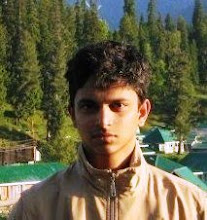Nigel Britto
On the first-floor balcony of a sprawling mansion in Parra, thirty-odd amateur video journalists sit cross-legged on blue and orange mats, chattering excitedly in anticipation of what, to them, is a ceremony far bigger than the Oscars.
They are community journalists of the 'India Unheard' campaign; change-makers from some of India's most remote districts and marginalized communities, who use their cameras to shout from the rooftops the ills that plague their world. The backdrop is open and simple; it's only a big 'India Unheard' banner that breaks the monotony of the trees beyond.
The awards ceremony is part of a longer training workshop, where these 'community correspondents' sharpen their skills and are helped to master their craft. Even the shoddy development around is a far cry from the Maoist and prejudice-infested areas many of them come from. As they prepare to receive their awards, their constant chatter and laughter rises to the yellow corrugated tin roof; this bunch, whose videos appear on a private national TV channel in what is the first programme of its kind in the world, are heroes of the other India, one that is fast-threatening to break the status quo.
As the ceremony starts, actor Abhay Deol, who's come to present the awards, seems as much in awe of them as they are of him. "I deeply respect those who take up philanthropic work as a career," he told TOI; he's been associated with the India Unheard movement for a year and a half now. As he distributes the awards, the changemakers who comprise this motley crew take notable pride in the accomplishments of their colleagues.
Here's how they work: the 'correspondents' select issues in their locality they need to highlight, get it approved by an editorial board, and when they shoot it, they courier the DVD across to Goa along with a paper edit, where an editorial board follows the instructions and puts the villager's dreams into concrete form. "We have a zero-rejection policy," says their long-haired and multilingual leader Stalin K, India director of Video Volunteers, the organization that's behind this movement. "This is the first time in the world a TV channel has paid to use content from the poor," he adds proudly.
But then, even this apparently simple model can afford hardships. Daniel Mate, 26, is from Manipur and has travelled seven days to get to Goa. His village is so remote, he travels 80 km just to get to the nearest town (Imphal) to post his videos. One of his films on health issues, which he uploaded on Facebook, was watched by Manipuris in Bangalore, and in a few days cartons of medicines found their way into his village.
Ajeet Bahadur, who reports from a village near Allahabad, exposed self-proclaimed spiritual man Satyam Yogi's misdeeds on the internet, and sarcastically says that "he's an expert in Kriya Yoga and land-grabbing". The land he grabs is of dalits, who are usually too afraid to speak," he adds. When the editorial board warned Bahadur about taking on the powerful Yogi, he accused the board of 'being cowards' and went ahead with the story anyway. Bhan Sahu, a gutsy woman who reports from Rajnand in Chhatisgarh and won an award here for her courage, is often branded a Naxalite for her relentless non-violent fight against injustice. Satyavan Verma from Haryana was sarpanch for five years before he joined the team. "I feel empowered and responsive towards the community," he says. Jay Kumar from Ludhiana is a geology major, but left it all to effect change.
Apart from the 'predictable' awards, the ceremony also featured quirky categories like 'Most promises made and not kept', the winner of which promptly thanked the politicians from whom he draws inspiration.
The million dollar question: Is this massive project likely to effect change? "Yes," says Tamara Gordon, a media veteran who's worked at the Community Programme unit of the BBC for over two decades. "I've seen this concept develop over 20 years, when we distributed 400 cameras to communities in England and encouraged them to come out with their own videos... These guys here are brilliant," she says, gesturing around the room and adding that the videos are of a very high standard, apart from being empowering and hard-hitting.
The 'India Unheard' campaign has also found a fan in Avatar star Stephen Lang. "Video Volunteers is creating a kind of grassroots Reuters. They have created an alternative media in places that don't have cinemas or TV or even regular electricity. As an actor, it is amazing to see people who have so little producing such interesting media," he says.
This article was first published on The Times of India's Goa edition on February 27, 2011.







